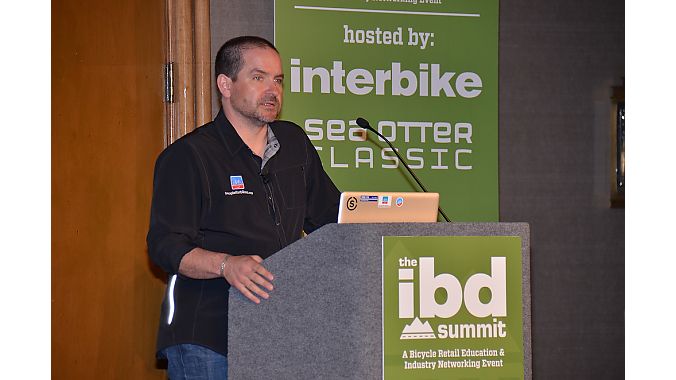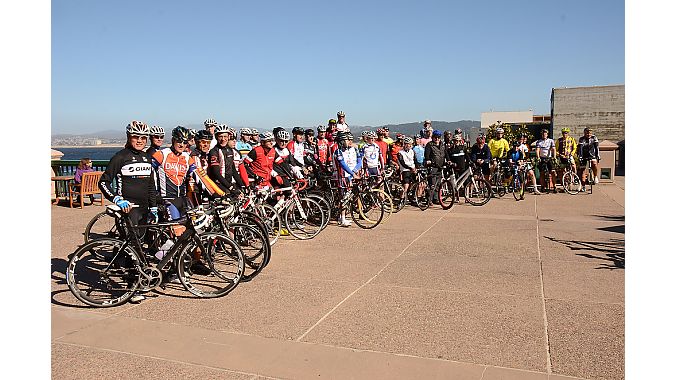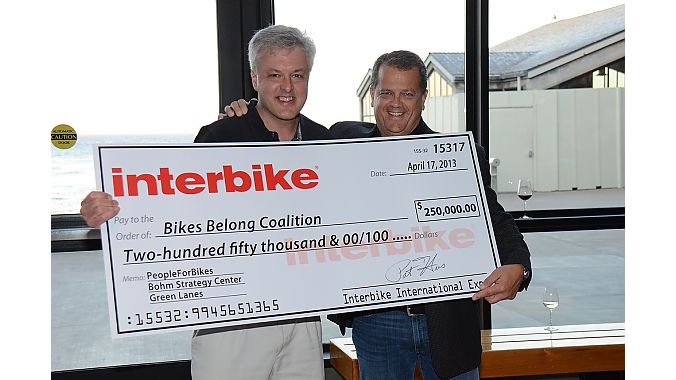MONTEREY, CA (BRAIN) — Homing in on many brick-and-mortar retailers’ most daunting concerns—how to survive and thrive amid online price slashing and better market themselves in the crowded digital marketplace—the second edition of the IBD Summit kicked of Wednesday with a round of spirited programming.
Summit presenters Interbike and Sea Otter Classic framed the day’s sessions macro to micro—big-picture thinking on trends in technology and social-media behavior leveraged by major U.S. and multinational corporations, to ground-level strategies individual shops can implement on a shoestring.
David Shing, “digital prophet” for AOL, delivered a rapid-fire address covering the shift from the information age to the social age, and now to what he dubbed the “interest age”—where like-minded people are coming together, as opposed to the general public just sharing their random thoughts and everyday experiences via social networks.
“You’re in an industry of like minds,” he said.
Whereas the social age has created a “land grab of rubbish” and Facebook “likes,” the charismatic Aussie said, attention is the new currency in the interest age.
Shing counseled the audience of 46 retailers to find the key influencers in their markets, engage those people, and get them to talk about their brand.
“It’s all about the storytelling, the emotional connection to your brand,” he said.
Craig LaRosa, principal for consulting firm Continuum Innovation, focused on tips for clawing back business from Amazon and fighting the trend of “showrooming” at brick and mortar.
Among the strategies recommended to draw customers away from the online shopping experience: cater to your best customers; make in-store shopping smaller and more intimate; and ensure that you have top-quality frontline employees—“they make or break your business,” LaRosa said.
Like Shing, LaRosa also pressed the importance of harnessing the power of key influencers in retailers’ markets. “It doesn’t cost that much. Find those powerful customers,” he said.
In a Q&A follow-up, Palo Alto Bicycles manager Jeff Selzer sought recommendations for fighting deep online discounting on parts and accessories, up to 70 percent in some cases, currently frustrating IBDs.
LaRosa admitted he didn’t have an immediate solution. “That kind of savings is a manufacturer issue,” he said.
Author and self-employment expert Patrick Schwerdtfeger zeroed in on social media strategies to make brands stand out in a world of online static. “Conversations are markets,” he said. “You have to engage in the conversation.”
Again, identifying key influencers is key, Schwerdtfeger said, but so is delivering quality content—and perhaps most important, delivering that content consistently.
The three-prong formula: identify what you do that is remarkable; convey that quality in a visual way on social networks; and get customers to talk about and generate content around what they love about your business.
Interbike increases Bikes Belong commitment
Preceding a dinner at the Monterey Bay Aquarium held in conjunction with the Bicycle Leadership Conference, running concurrently with the IBD Summit in Monterey, Interbike show director Pat Hus announced that the organization was upping its contribution to industry advocacy group the Bikes Belong Coalition by 50 percent in 2013, to $750,000. The increase makes Interbike Bikes Belong’s largest contributor.
“Spend it well,” Hus said in presenting a ceremonial check for $250,000, the amount of the increase, to Bikes Belong president Tim Blumenthal.











